Effective Techniques for Comprehensive Ant Inspection
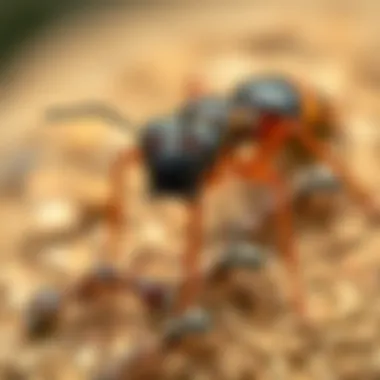
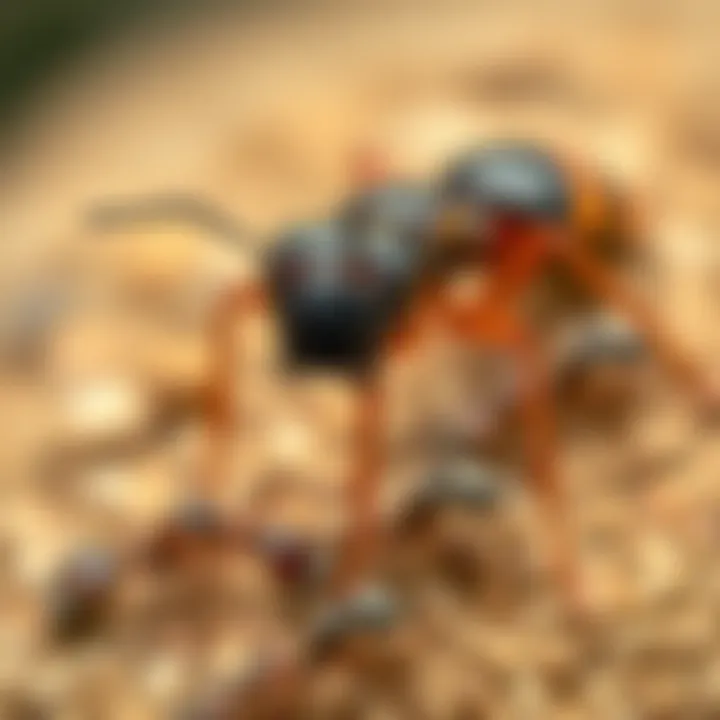
Intro
Understanding the ways ants invade our homes and workplaces is crucial for anyone looking to maintain a pest-free environment. Ant inspections serve as the first line of defense when facing these common intruders. Different species come with unique behaviors, signs, and strategies for extermination.
This article aims to unravel the complexities of ant inspection, focusing on techniques and best practices that help individuals identify and manage ant infestations effectively. Homeowners, renters, and pest control professionals should all be equipped with this vital knowledge to take swift and effective action against unwanted guests.
Pest Identification
Identifying the specific type of ant is paramount. Each species exhibits distinct behaviors and preferences, making tailored pest control strategies more effective.
Detailed Descriptions of Common Pests
There are many types of ants; however, the most common species that invade homes include the carpenter ant, odorous house ant, and fire ant:
- Carpenter Ant: These ants are particularly notorious for nesting in wooden structures, often causing significant property damage. They have a preference for damp or decaying wood.
- Odorous House Ant: Easily recognized by their sweet, rotten coconut smell when crushed. They often invade homes in search of food and can quickly establish colonies inside.
- Fire Ant: Recognizable by their reddish color and painful sting, fire ants build mound nests outdoors but may also enter buildings in search of food sources, making them troublesome.
Signs and Symptoms of Infestations
There are various indications that signal an ant problem:
- Presence of live ants, particularly near food sources or entry points.
- Trails of ants leading to nests or food.
- Small piles of dirt or eroded wood in locations where carpenter ants might be nesting.
- A strong odor caused by doughy food near odorous house ants.
"A few ants could mean a larger problem lurking just out of view; it pays to keep an eye out!"
Prevention Strategies
Prevention is the key to minimizing ant problems before they arise. Keeping a clean and clutter-free environment can go a long way.
Home Maintenance Tips for Pest Prevention
Here are some effective preventive measures:
- Seal Entry Points: Inspect and seal any cracks or gaps in walls, windows, and foundations to stop ants from infiltrating.
- Maintain Cleanliness: Regularly clean food surfaces, crumbs, and spills. Don't forget about pet food, which can be another attraction for ants.
- Store Food Properly: Keep food in airtight containers, making it hard for ants to get a whiff of a meal.
Natural Deterrents and Barriers
Utilizing natural deterrents can offer an extra layer of protection:
- Vinegar: A mixture of equal parts vinegar and water acts as an effective spray to disrupt ant trails.
- Cinnamon: Sprinkling ground cinnamon at entry points is believed to act as a barrier due to its strong scent.
- Diatomaceous Earth: Sprinkling food-grade diatomaceous earth in problem areas can eliminate ants without resorting to chemicals.
Treatment Options
If prevention isn’t enough, understanding your options for treatment becomes essential. Both chemical and natural solutions are available.
Overview of Chemical vs. Natural Treatments
- Chemical Treatments: These include commercial insecticides designed specifically for ants. While they can be effective, they pose risks to children and pets, so caution is necessary.
- Natural Treatments: Options such as essential oils or sprays made from natural ingredients lower the risk of harm. Moreover, these tend to be more environmentally friendly.
Step-by-Step Guides for DIY Treatments
For those inclined toward self-treatment, consider this simple method for a natural ant bait:
- Ingredients: Mix boric acid, sugar, and water.
- Create a Paste: Stir until it forms a thick paste, then place it on small pieces of cardboard or dish.
- Placement: Put the bait near identified ant trails but make sure to keep it away from kids and pets.
By following these insights and tools at your disposal, you can take effective steps whether you're dealing with an existing ant infestation or you’re looking to prevent one from settling down in your living space.
Recommended Resources
For further reading, check these resources:
- Wikipedia on Ant Control
- Britannica on Pests
- CDC’s Pest Management Tips
- Reddit Ant Control Community
- Facebook Pest Management Pages
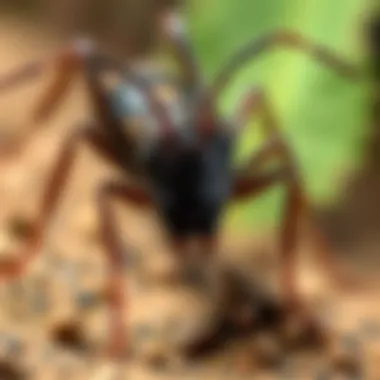
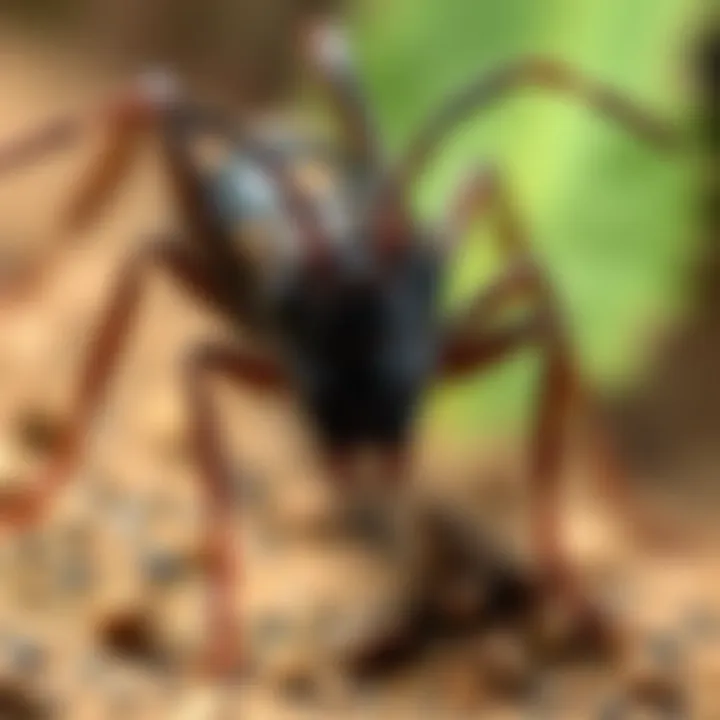
Staying informed and acting promptly can significantly minimize the impact these persistent pests have on our lives. Armed with this understanding, anyone can tackle the issue head-on.
Foreword to Ant Inspections
Ant inspections are crucial in both residential and commercial environments, serving as the first line of defense against potential infestations. These tiny creatures can wreak havoc if left unchecked, turning a serene home or workplace into a battleground against the uninvited. By getting a firm grasp on this inspection process, homeowners and property managers can nip problems in the bud before they spiral out of control.
Understanding Ant Behavior
To effectively manage ants, it’s imperative to understand their behavior. These insects are social creatures, living in colonies that can number into the thousands. Their infrastructure includes a queen, workers, and sometimes soldiers, each playing a specific role that keeps the colony thriving. Worker ants, for instance, are the ones frequently observed foraging for food. They can travel considerable distances—up to several hundred meters—looking for sustenance to bring back home. This behavior often brings them into contact with human dwellings. Knowing that they are attracted to both food and moisture can help pinpoint areas of concern.
Knowing the habits of ants can also reveal their preferred pathways. These insects leave pheromone trails to communicate with one another, effectively marking routes to food sources. Recognizing these trails provides vital clues during an inspection. Common tactics include following their pathways back to nests or entry points, while also observing patterns of activity at different times throughout the day.
Importance of Inspections
Regular inspections not only help in identifying existing problems but also play a key role in preventative measures. Think of these inspections as routine check-ups for your home. Much like a doctor scrutinizing a patient for signs of illness, a thorough ant inspection allows for early detection of infestations, which can often go unnoticed until significant damage occurs.
The importance of inspections cannot be overstated:
- Early Detection: Spotting an infestation at its onset can prevent costly damage and extensive remediation efforts down the line.
- Custom Solutions: Each property is unique, and understanding the specific settings and conditions of a home allows for targeted approaches rather than one-size-fits-all solutions.
- Awareness and Education: Knowing the signs of ants and common hotspots equips homeowners with the knowledge required for proactive pest control.
In summary, performing regular and detailed ant inspections enhances property protection while enabling informed decisions on control measures. By understanding ant behavior and the critical nature of these inspections, homeowners can secure their spaces against these relentless intruders.
Identifying Common Ant Species
Identifying different types of ants is crucial for both effective pest control and understanding how to prevent future infestations. Each species has its own unique behaviors and habitat preferences, which can influence the strategies used for management and prevention. Notably, recognizing these species can lead homeowners to adopt tailored approaches, whether that means employing barriers, baiting strategies, or even natural remedies specific to each ant type. With this knowledge, you can not only address current infestations but also arm yourself with the tools to keep your space ant-free.
Carpenter Ants
Carpenter ants are often misunderstood. Unlike termites, they don’t eat wood; rather, they excavate it to build their nests. These ants can cause significant structural damage over time if left unchecked. They're typically large, with black or bicolored bodies, making them fairly easy to identify. When inspecting for carpenter ants, pay attention to the sound of rustling wood and the presence of wood shavings around potential nesting sites. It’s also useful to note that these ants thrive in moist environments, so areas that have sustained water damage are prime spots for their nests.
Odorous House Ants
These little critters are aptly named for producing a distinctive odor when crushed, often reminiscent of rotten coconuts. Odorous house ants are about 1/8 inch long and can form large colonies, making them particularly troublesome. They are usually found in kitchens or near moist areas, such as sinks or bathrooms. During inspections, look for their trails leading to food sources or entry points. They often invade homes when their outdoor food supply runs low, so keeping food sealed tight can sometimes prevent their entry.
Pavement Ants
These ants tend to make their nests in cracks in sidewalks and driveways, hence their name. They are generally brown to black and roughly 1/8 inch in length. Pavement ants are not as invasive as some other species, but they can still become a nuisance, especially when they enter homes in search of food. Pay attention to areas around foundations and doors during inspections, as these ants can easily find their way inside through the tiniest of gaps. If discovered during an inspection, sealing any potential entry points is vital.
Fire Ants
When it comes to discomfort, fire ants are in a league of their own. Known for their painful stings, they build large, visible mounds usually in sunny areas. These ants are aggressive and will defend their nests fiercely. Identification is crucial, as neglecting a fire ant infestation can lead to numerous stings, particularly if pets or children are around. Inspections should focus on outdoor areas like gardens and lawns, especially during warmer months when they are most active. If you spot a mound, it’s wise to tread carefully as disturbing it can provoke these ants to swarm.
Key Takeaway: Understanding how to identify different ant species is integral to effective pest management. Each species presents its own set of challenges, and being aware of their habits can significantly ease the path to eradication and prevention.
In summary, knowing the common ant species found in your home or garden is not only a preventive measure but also a fundamental step in effective pest control. It equips homeowners with the right knowledge and tools to tackle infestations head-on.
Methods for Conducting an Ant Inspection
Conducting an ant inspection is a pivotal step in managing ant infestations effectively. This section will highlight various methods for inspecting your property, considering both residential and commercial settings. By understanding the approaches to an ant inspection, property owners can better detect infestations early on, leading to more successful control measures. These methods combine visual techniques with the use of modern tools, ensuring a thorough examination for the presence of these resilient insects.
Preparing for an Inspection
Before embarking on your ant inspection journey, preparation is crucial. You want to be equipped, not only with tools but also with knowledge. Start by familiarizing yourself with the common ant species that may invade your space, such as the pesky Carpenter Ants or the persistent Odorous House Ants. Make a checklist of areas to inspect, such as potential entry points like gaps in windows and doors, as well as hidden niches like under sinks and behind appliances. Having a clear game plan allows for a more structured and effective inspection.
Visual Inspection Techniques
Using Flashlights
Using flashlights during your inspection can significantly illuminate hidden areas where ants might be lurking. A good quality flashlight helps to reveal entry points and trails that the naked eye might miss, especially in dim or cluttered spaces. This method is particularly beneficial because ants often use dark and undisturbed paths for their daily operations. The bright beam of your flashlight acts as a guide, uncovering the otherwise inaccessible recesses of your home. However, it’s essential to ensure your flashlight’s batteries are fresh; the last thing you want is to be left in the dark when searching for those tiny critters.
Inspecting Indoor Areas
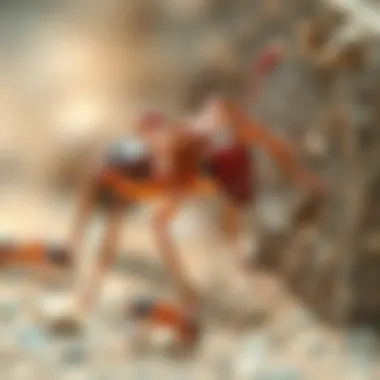

When inspecting indoor areas, be meticulous. Start from the locations most likely to be infested, such as kitchens and pantries. Look within cupboards, behind food packaging, and under appliances. Pay special attention to corners, as ants often congregate in these spots. A key characteristic of indoor inspections is touching and moving around items; this often reveals trails or nests that may not be initially visible. While thorough, this approach can reveal unique patterns of infestation caused by the specific food storage habits within the household. Just be cautious not to disturb too much, as this could send the ants scattering out of sight.
Examining Outdoor Perimeters
Outdoor inspections are equally important. Walk around the exterior of your property and audit potential nesting sites such as under pavers, within mulch beds, or along garden borders. The key here is that ant species like Fire Ants are often more visible outdoors, and discovering their nests can prevent them from making an entrance into your home. This method allows you to anticipate potential invasions and act preemptively. One downside is that outdoor inspections demand more time and patience due to the larger area you need to cover. Nevertheless, they are invaluable for a comprehensive understanding of the infestation risk your property faces.
Utilizing Tools and Technology
Inspection Cameras
Inspection cameras have revolutionized the way pest control professionals conduct inspections. These small, often handheld devices, allow you to reach inclosed spaces without extensive repairs or moving heavy furniture. They are vital for location-specific investigations, particularly in hard-to-reach areas within walls or attics. Utilizing cameras can uncover nests and pathways quickly, making the inspection process more efficient. However, the cost of such technology can sometimes be prohibitive for DIY inspectors. Still, the time saved and accuracy achieved often justify the use.
Moisture Meters
Moisture meters are beneficial tools for identifying conducive conditions for ant infestations, particularly Carpenter Ants, which are drawn to damp wood. These meters measure moisture levels in walls and floor structures, helping identify hidden sources of water damage that might attract ants. The unique feature of moisture meters is their ability to detect high moisture areas without invasive procedures, thus preserving the integrity of your home during inspections. It’s worth noting that while moisture meters can aid in identifying problematic areas, they won’t pinpoint the exact locations of nests, so they should be used in tandem with other methods for best results.
Baiting Systems
Baiting systems are yet another ingenious addition to the toolkit for an ant inspection. These systems not only attract ants but also help in identifying pathways and trails they frequently traverse. During your inspection, placing bait can reveal where the infestation is most concentrated, highlighting the hierarchy within the ant population. While helpful, bear in mind that if not monitored carefully, these baiting systems can sometimes lead ants away from their nests, causing unnecessary complications in identifying and treating the core issue. Additionally, it’s crucial to choose bait that aligns with the specific ant species you are dealing with; what works for one might not work for another.
Analyzing Inspection Findings
When it comes to managing ant infestations, understanding the inspection findings is crucial. This segment delves into the primary components of ant analysis, helping homeowners and pest control specialists make informed decisions. Proper analysis not only uncovers the extent of an infestation but also sheds light on potential strategies for effective management. By examining specific infestation patterns and assessing the potential damage caused by these uninvited guests, one can take proactive measures that could save both time and money.
Recognizing Infestation Patterns
Recognizing infestation patterns is the keystone of effective ant management. No two infestations are identical, and pinpointing the characteristic behaviors of the ants involved is vital.
Ants often create trails leading to food sources, and these tend to be well-defined, especially with common culprits like the odorous house ant or the pavement ant. Look for signs of these trails, which can often be seen even in low-light conditions when a flashlight is employed during inspections. Pay attention to areas that frequently see human activity, such as kitchens and living rooms, as ants tend to follow the scent of food.
“Ants are social creatures; where one goes, others will follow.”
Observe where you see the most activity: Are certain pathways consistently occupied? Or do the ants appear more in one region of the house? Documenting these observations can provide insight into the species type, which helps in predicting their behavior further down the line. For example, carpenter ants usually nest in moist wood, which might lead you to check for signs of water damage along with the ant observations. Identifying these patterns allows you to anticipate their movements and strategize accordingly.
Key Indicators of Infestation Patterns:
- Scent Trails: Detectable pheromone trails ants leave behind.
- Foraging Behaviors: Times when you notice heightened activity (often early morning or late afternoon).
- Visual Clues: Links between nest sites and food sources; check for nearby standing water or damp areas that may attract them.
By understanding where and how ants invade your space, you can better formulate a plan to combat them.
Assessing Damage Potential
Once your inspection has allowed you to pinpoint infestation patterns, the next step is assessing the damage potential. Not all ants are created equal, and their impact can vary significantly based on species and the extent of the infestation. This assessment serves a dual purpose: it identifies what damage might have already occurred and predicts what could happen long-term if the situation goes unaddressed.
For instance, if you’re dealing with carpenter ants, an infestation could suggest existing structural damage due to nesting behavior within wooden beams or furniture. Such infestations can substantially undermine the integrity of your home. Conversely, infestation from species like pavement ants tends to be more of a nuisance, causing less severe damage while still needing action for peace of mind.
Factors to Consider When Assessing Damage:
- Type of Ant: Identify the species to understand the potential for damage (for example, carpenter ants vs. sugar ants).
- Extent of Infestation: More ants typically produce more damage; whether visible or hidden, check for droppings, frass, or hollowed wood.
- Location of Nests: The closer nests are to essential areas in your home, the greater the risk associated with them.
Getting an accurate evaluation of potential damages acts as a compass guiding your management efforts. This analysis could easily sway decisions on whether to employ DIY strategies, natural remedies, or contact pest control professionals.
Prevention and Control Measures
When dealing with ant infestations, having a firm grip on prevention and control measures can make all the difference. This section highlights the various strategies you can employ to not only address current issues but to safeguard against future invasions. By understanding these methods, homeowners can maintain a pest-free environment more efficiently and calmly.
Structural Mitigation Techniques
Implementing structural mitigation techniques is often the first line of defense against ant infestations. These strategies focus on altering your home’s environment to make it less inviting to ants. Some fundamental structural adjustments include:
- Sealing Entry Points: Ants often enter homes through tiny cracks and crevices. Sealing these openings with caulk or other suitable materials can prevent their entry. Pay special attention to gaps around windows, doors, plumbing, and electrical outlets.
- Proper Drainage: Standing water can be a magnet for ants, particularly fire ants. Ensure that your drainage system is functioning properly and that no puddles form in your yard or around your foundation.
- Landscaping Considerations: Ants are attracted to vegetation close to the house. Keeping shrubs, trees, and soil at a distance from your building reduces the chance of ants finding their way inside. Cut back on overgrown plant life that might provide secluded pathways.
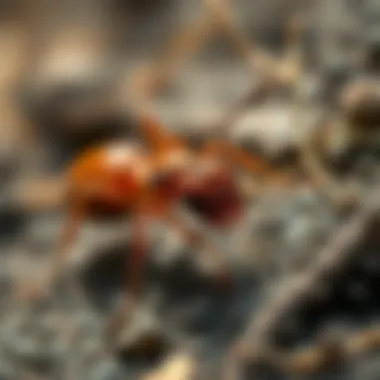
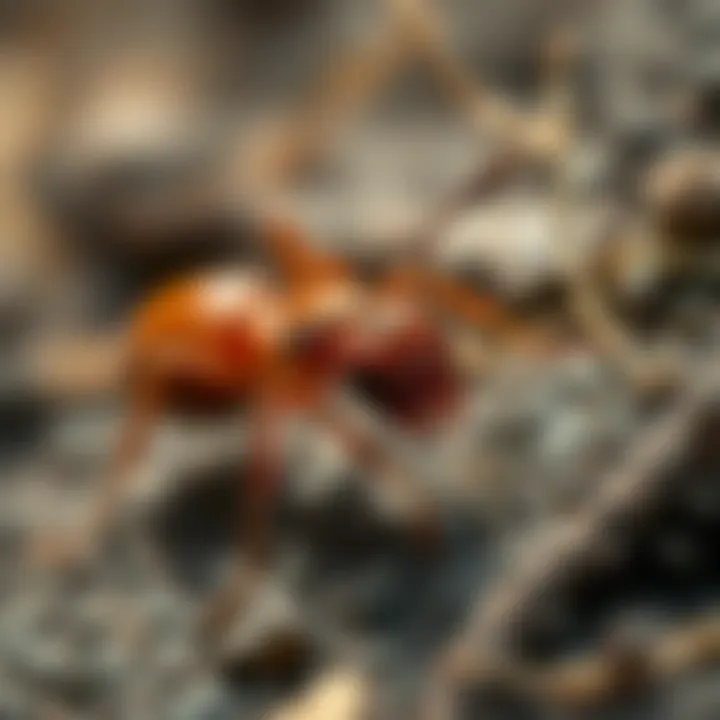
Implementing these structural changes, while requiring some effort, can prevent a lot of hassle down the line.
Natural Repellents and Traps
For those who prefer an organic approach, natural repellents and traps can effectively discourage ant activity. Here’s a glimpse of some popular options:
- Diatomaceous Earth: This powdery substance can be sprinkled around areas where ants enter or reside. It works by causing dehydration in ants without harming pets or children.
- Vinegar Solution: Mixing equal parts of vinegar and water can create a potent ant deterrent. Wiping down surfaces with this solution can remove the scent trails that ants use to navigate and communicate.
- Essential Oils: Oils like peppermint and tea tree have strong scents that act as natural repellents. Diffusing these oils in areas of high ant activity or diluting them with water and spraying can help push ants away.
Traps can also play a crucial role in capturing any rogue intruders. Sticky traps or homemade baited bases can help manage small-scale infestations without the use of harsh chemicals.
Chemical Control Options
While many may lean towards natural methods, sometimes chemical interventions are necessary. Chemical control options should be considered with care, especially in homes frequented by children and pets.
- Bait Stations: These are designed to attract ants and deliver a toxic substance back to the colony. Using bait stations often leads to more comprehensive reductions in ant populations, as they target the nest instead of individual ants.
- Insecticidal Sprays: If an infestation is visible, insecticidal sprays can be effective. These are applied directly to affected areas but should be used judiciously to minimize health risks within the household.
- Granular Insecticides: Applied around the perimeter of the home, these can create a barrier against ants attempting to infiltrate.
When opting for chemical solutions, ensure to read labels carefully, and follow safety instructions to maintain a balanced and protective household environment.
It’s important to remember that no one method is a guaranteed fix-all. Integrating multiple strategies, assessing their effectiveness, and remaining diligent will ensure lasting ant management that protects your home for years to come.
For further reading on pest management, consider visiting Pest Control Strategies, where one can find extensive resources and insights.
Working with Professionals in Pest Control
Working with experts in pest control is a vital aspect for anyone dealing with ant infestations. Effective management goes beyond just identifying the problem; it encompasses strategies tailored to resolve it efficiently. Professionals bring a wealth of knowledge and experience that can significantly reduce stress for homeowners. They can pinpoint the specific ant species and understand how their behaviors affect infestation patterns. This can be a game changer.
Hiring pest control professionals provides several benefits:
- Knowledge of Ant Behavior: Professionals understand the nuances that come with different ant species. Their training allows them to quickly assess infestation levels and suggest suitable treatments.
- Access to Specialized Tools: Experts have access to equipment that the average homeowner might not possess, such as advanced thermal imaging and specialized pesticides. These tools enhance the efficacy of inspections and eradication efforts.
- Long-term Solutions: Rather than just treating the symptoms, professionals focus on long-term prevention strategies, ensuring that once the ants are gone, they don't make a return.
- Time and Effort Savings: DIY approaches are often time-consuming. By hiring experts, homeowners can free up their time for more pleasant activities.
"Investing in professional pest control can save you money in the long run by preventing costly structural damages to your home caused by infestations."
Even with the benefits outlined, it’s essential to consider specific scenarios when to engage professional services. This brings us to the next crucial aspect of addressing ant infestations.
When to Seek Help
There are key indicators that suggest it might be time to call in the cavalry:
- Persistent Infestations: If you’ve tried over-the-counter methods with little to no success, it’s a sign that the problem is bigger than one can tackle alone.
- Multiple Ant Species: Sometimes, homes attract different species of ants that require tailored approaches. A professional can identify and treat each appropriately.
- Signs of Damage: Carpenter ants, in particular, can cause significant structural damage. If you notice wood shavings or weakened structures, it’s prudent to get expert help right away.
- Health Concerns: Some ant species can contaminate food or cause allergies. If you are concerned about health risks, don’t hesitate to consult professionals.
What to Expect from a Professional Inspection
When you engage with pest control services, understanding what to expect can help ease any uncertainties. Here’s a rough idea of what usually takes place:
- Initial Consultation: The professional will discuss your concerns and gather information about the infestation. Be prepared to share details like when you first noticed the ants and any measures you’ve already taken.
- Thorough Inspection: Expect a comprehensive examination of your home’s interior and exterior. The inspector will check common hotspots—like kitchens, bathrooms, and around windows—for signs of ants and nests.
- Findings Report: After inspecting, the professional will provide a report on their findings, detailing the ant species, the extent of the infestation, and potential entry points.
- Action Plan: Following the inspection, they will discuss solutions tailored to your specific situation, sometimes recommending a combination of treatments for the most effective results.
- Follow-Up Visits: Often, a one-time treatment isn’t sufficient. Professionals may schedule follow-up visits to monitor the situation over time.
Being proactive and knowing when to call in the pros can save you a lot of headaches down the line. Pest control professionals can turn a potentially overwhelming situation into manageable solutions.
Culmination and Best Practices
In the world of pest management, understanding the ins and outs of ant inspections can make all the difference. This section aims to stitch together the pieces we've discussed throughout the article, highlighting the importance of thorough inspections, effective techniques, and proactive measures for ant management.
Summary of Key Points
At its core, the essence of successful ant management hinges upon a few pivotal elements:
- Early Detection: Discovering an ant infestation early can save you significant trouble later on. An ounce of prevention is worth a pound of cure, and regular inspections are your first line of defense.
- Species Identification: Knowing what species you’re dealing with is crucial. Each type of ant behaves differently and requires a tailored approach. For instance, Carpenter ants could mean structural weaknesses, while Fire ants pose a risk due to their aggressive nature.
- Inspection Techniques: A mix of visual assessments and modern technologies like inspection cameras provides a more comprehensive understanding of potential infestation areas.
- Prevention Strategies: Implementing structural mitigation techniques and utilizing natural repellents helps minimize the chances of ants intruding into your space.
- Professional Help: Understanding when to call in the experts cannot be stressed enough. Their knowledge can often make short work of problems that might take homeowners much longer to resolve.
Final Thoughts on Ant Management
Ant management is not just a one-off fix but rather a continuous commitment to maintaining a pest-free environment. Homeowners should develop a keen eye for signs of infestation, practice regular inspections, and consider integrating both natural and chemical control options where necessary.
Ants, while often seen as mere nuisances, can easily disrupt the peace of your home if left unchecked. Taking the initiative, being informed, and adopting best practices is essential for ensuring ants don’t overrun your living space.
“An effective pest control plan not only addresses current issues but fortifies your home against future infestations.”
In summary, combining knowledge, preparation, and ongoing vigilance fosters a proactive mindset against ant invasions. When times get tough, and the little critters seem to invade, remember that knowledge is power and the first step toward a harmonious home.



